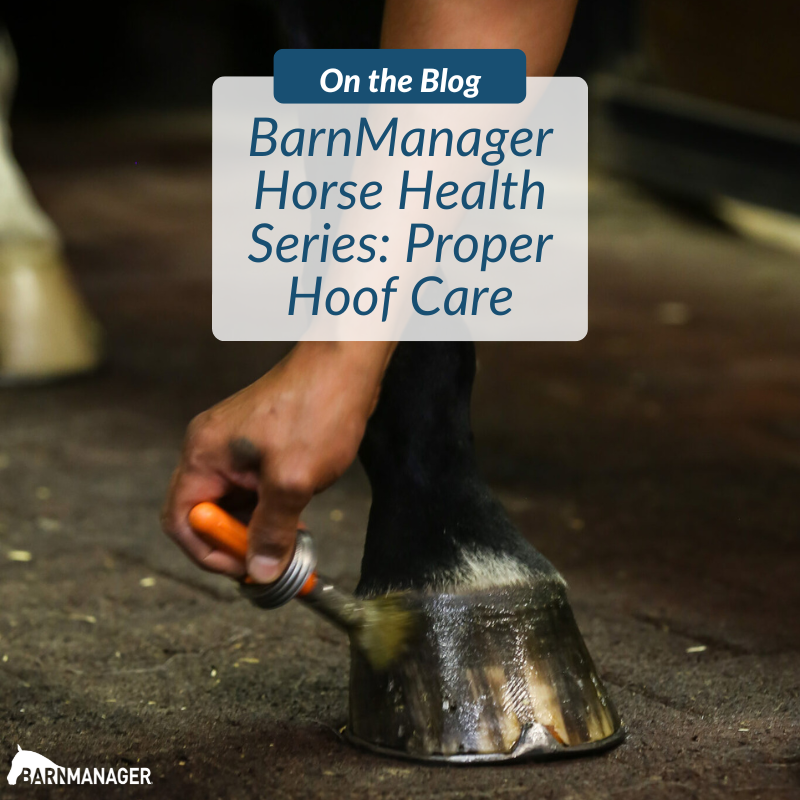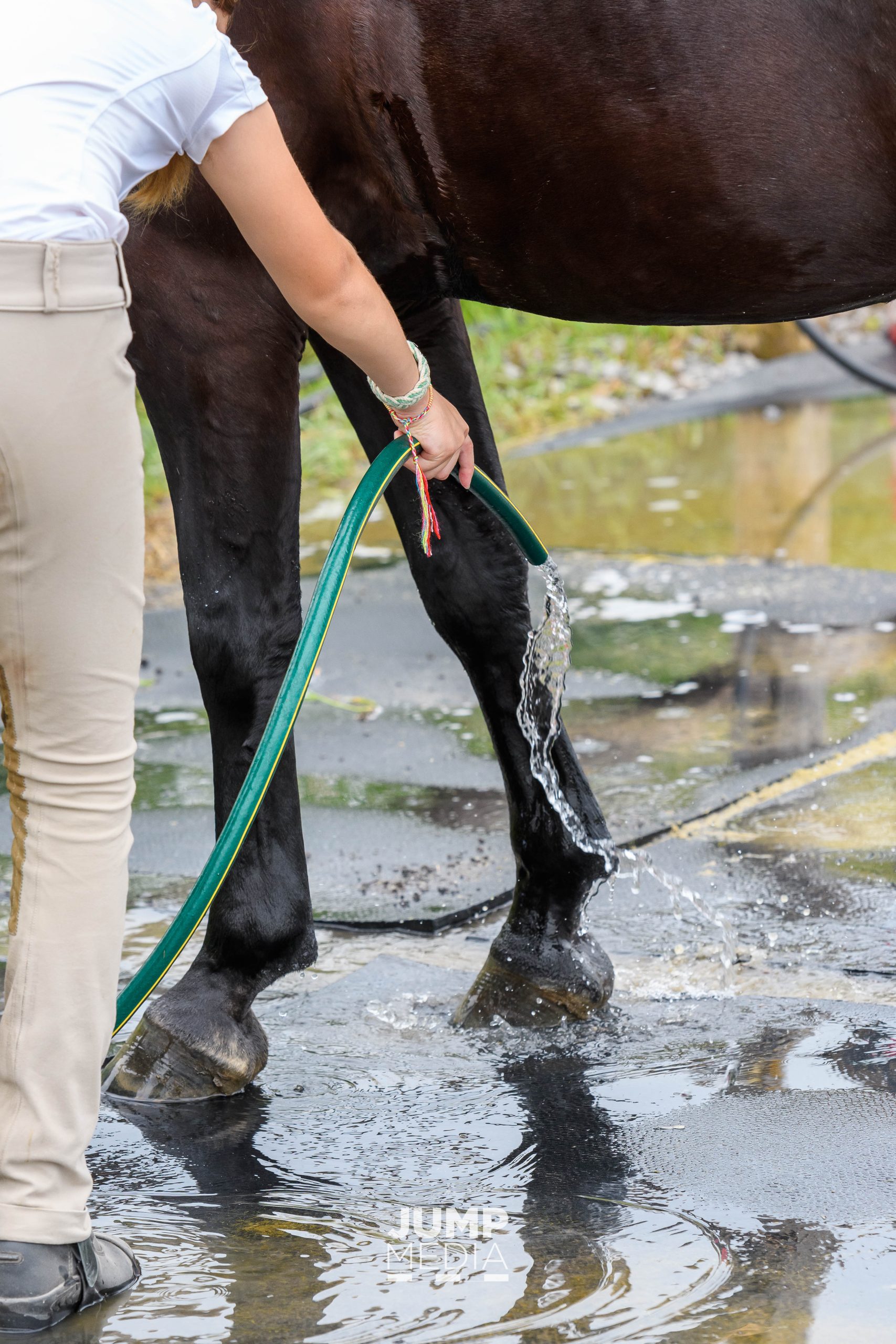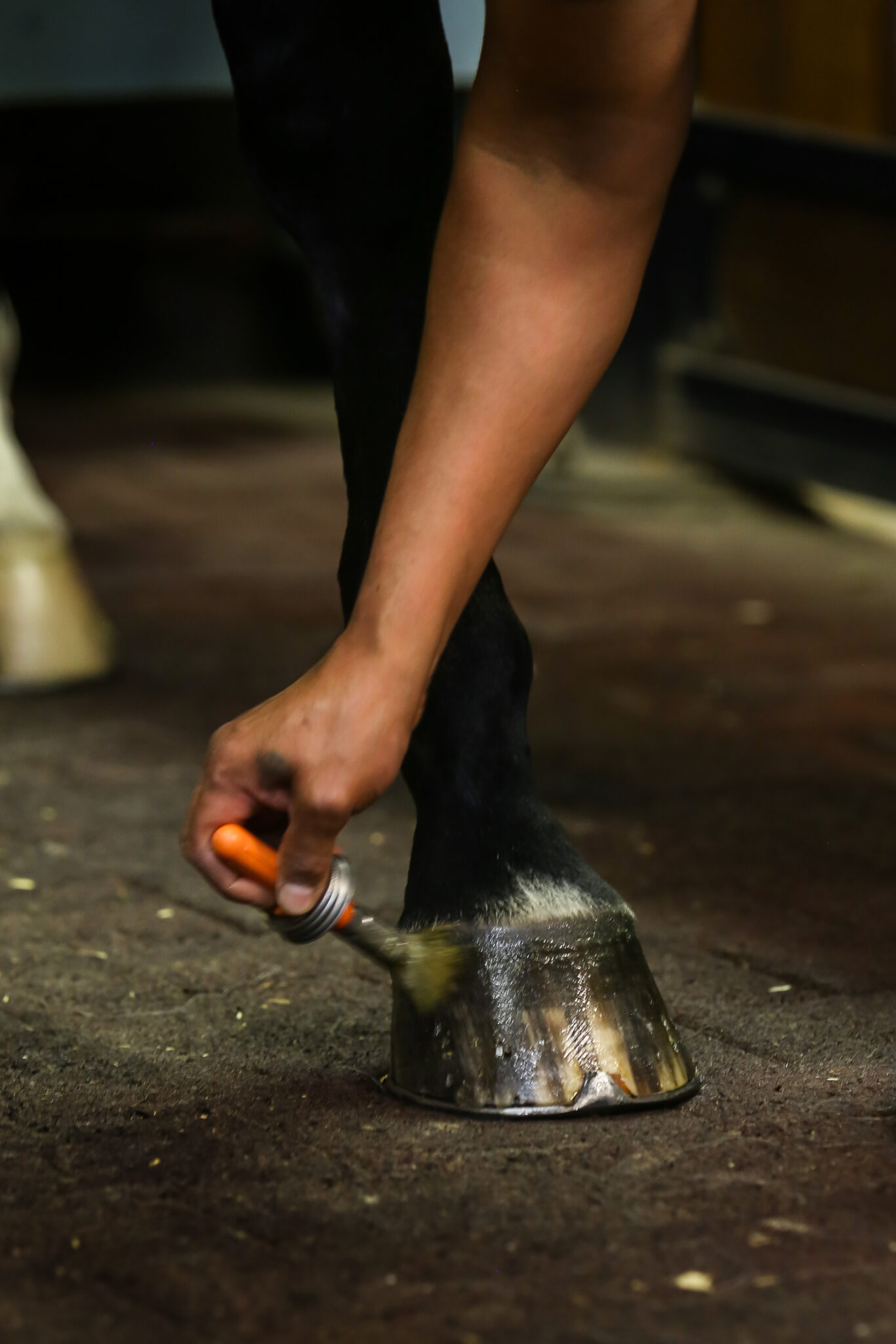
BarnManager Horse Health Series: Proper Hoof Care
Proper hoof health can be difficult to achieve at any time of year, especially during the months with higher temperatures and humidity. A solid, healthy hoof is even more difficult to attain in a warmer climate due to an increase in moisture in the environment. Dr. Stephen O’Grady of Palm Beach Equine Clinic in Wellington, FL, explains how moisture contributes to a weaker hoof infrastructure and offers steps owners and managers can take to help keep moisture away and strengthen horses’ hooves.
We tend to use more water to keep horses cool when the temperatures are high, both at competitions and at home. In many areas of the country, the humidity levels also increase during this time of year, adding moisture to the air and preventing hooves from drying as quickly. What happens to a hoof with excess water is similar to what would happen to a wooden plank that’s placed in a water trough: it becomes waterlogged, then softens and becomes weaker as a result.
It is best to tackle issues that accompany moisture by going straight to the source and minimizing the amount of water that comes in contact with the hooves. This can be accomplished in several ways:
-
Give your horse fewer baths

Photo by Jump Media
Cutting down on how many times per day a horse is hosed can be difficult with competition horses that need to stay clean and that may be exercised, ridden, or shown several times per day. Still, it is important to be strategic about using water, especially on the legs. At home, try to occasionally let your horse air dry in front of the fan if a bath isn’t entirely necessary. Body clipping will help your horse’s heat tolerance this time of year and you may not have to use the hose after every ride.
-
Avoid standing water
If you must bathe, be sure the horse isn’t standing in excess water that rises over the hoof capsule. Try to shower off the horse in a dry area so the surface underneath the horse does not contribute to the moisture level. After being bathed, move the horse to a dry surface so their hooves can thoroughly dry.
-
Use hoof shields to direct water away from the hoof
A good preventative tool to use while hosing is tight-fitting bell boots that cover the hoof and prevent external water from running down onto the hoof. The same effect can be accomplished with a gallon-sized plastic bag. Simply cut the bottom of the bag, place the horse’s foot inside, and seal the bag just below the fetlock to prevent excess water from sliding down the hoof.
-
Stand the horse in sawdust
Sawdust and similar materials have a drying effect on hooves. If hooves become saturated for any reason, let the horse stand in deep sawdust to extract the moisture. Shavings would work also, but sawdust is the most effective for absorbing moisture.
-
Use a shellac-type hoof dressing

Photo by Jump Media
This type of product can help prevent the hoof from absorbing too much water if applied before baths or turnout. Ask your farrier or veterinarian to recommend options that will do the job when used one to two times per week. Boric acid powder can also be applied to horses’ feet once or twice a week, serving as an astringent for the hoof.
-
Avoid turning out early in the morning
When humidity is high, the grass at dawn will have a high dew level, meaning horses will be standing on wet surfaces during the first hours spent outside. Though temperatures are cooler as the sun is still rising, for overall hoof health it’s best to wait until the grass has dried.
-
Farriery may need to be changed during warmer months
Open the lines of communication between your veterinarian and farrier. This is a crucial step to ultimate hoof care. Each professional has a reason behind their decisions, and if the two work together as a team, the horse has a much higher chance of achieving optimal hoof health.
Achieving a healthy hoof is not solely a farrier’s job; it is a whole team effort and requires dedication and attention. By implementing these recommendations into your horse care routine, you can play a role in how moisture affects your horse’s hooves. When considering the effects of excessive moisture on the hoof wall, it’s important to understand there are other factors involved, including the age of horse, breed, genetic makeup, foot conformation, and current farriery practices. With open communication and implementing these measures as a team, you are on the right track to achieving a stronger and overall healthier hoof.
For a more in-depth explanation of horse hoof health, click HERE to read the full article from Palm Beach Equine Clinic.
NOTE: These guidelines are only suggestions, and you should always follow the specific instructions from your veterinarian.
Have questions about utilizing BarnManager or want to give it a try for yourself? Request a live demo here!